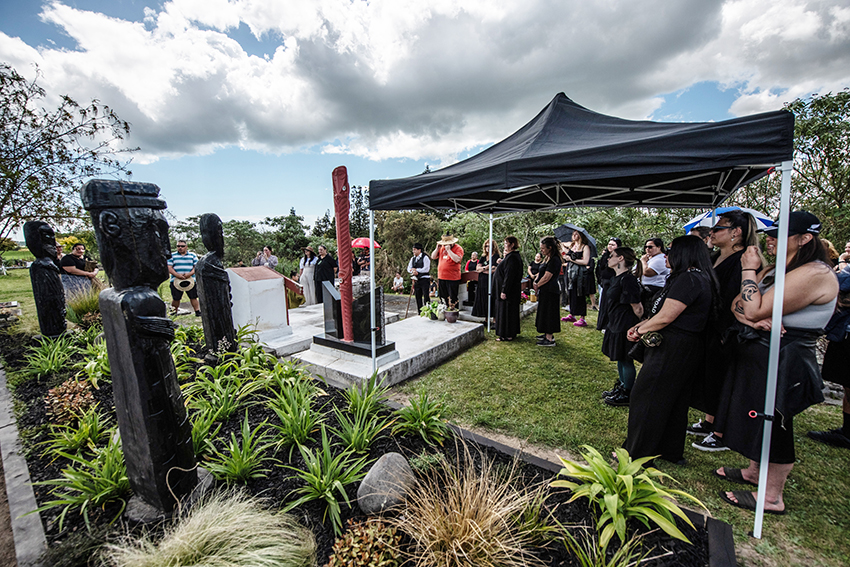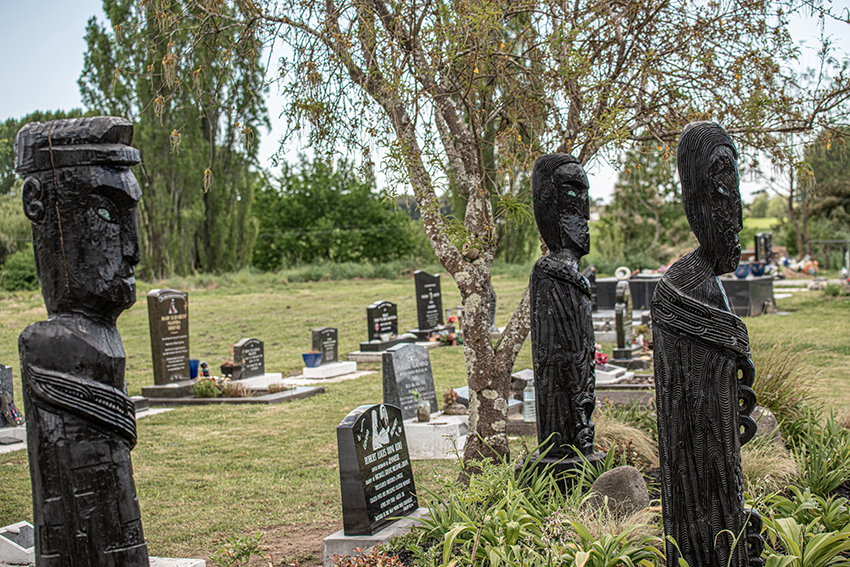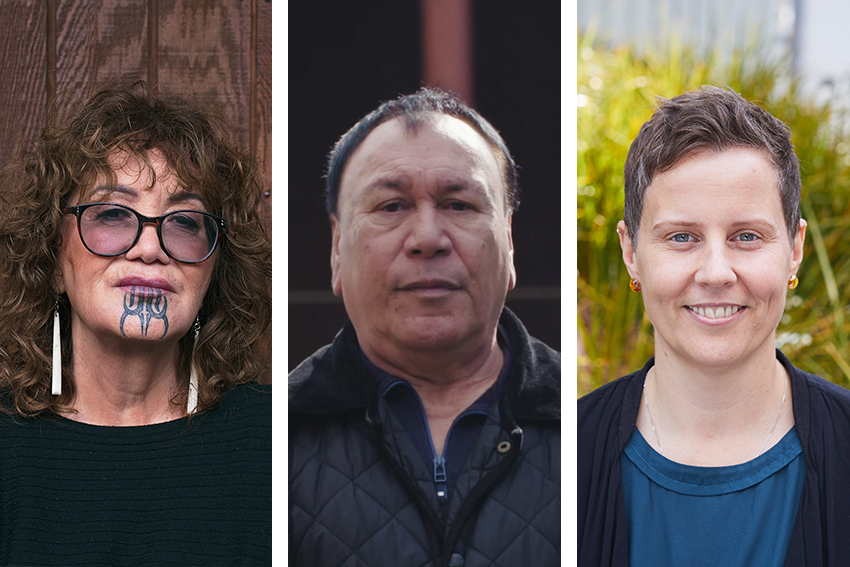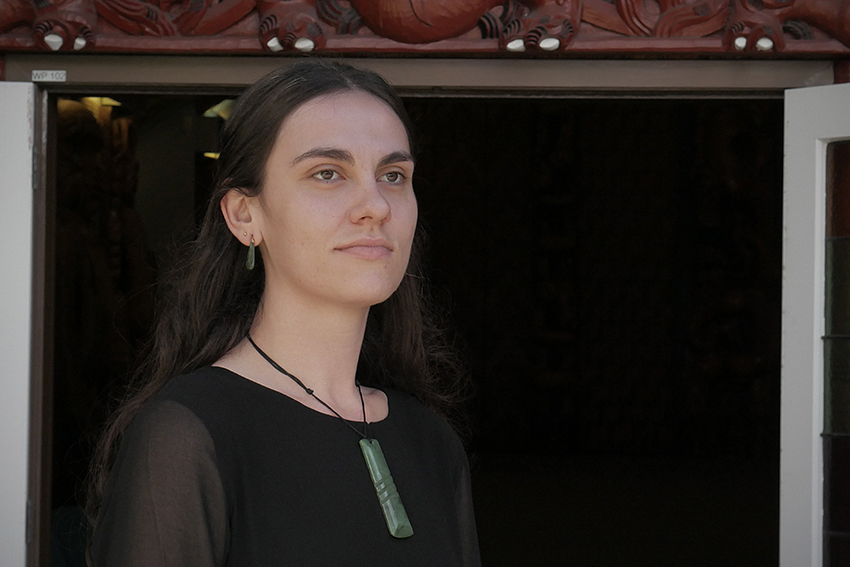Decolonising Māori death practices

Marsden-funded research is revitalising and adapting ancient Māori burial customs and practices for modern life.
Tribes have expressed a deep unease with pollution caused by Western-style burials and an interest in natural burial methods, says Professor Hinematau McNeill (Tapuika, Ngāti Moko, Tūhourangi) of AUT.
Professor McNeill has been working on the study to decolonise death together with ecologist Professor Hannah Buckley, Auckland University’s Dr Robert Pouwhare (Ngāti Haka, Tūhoe), Research Assistant Kathleen Frewen (Te-Whānau-ā-Apanui, Whakatōhea) and tribal research assistants.
“Our relationship with Papatūānuku (Mother Earth) is severely compromised when we are buried embalmed with chemicals and wrapped in coffins made using synthetic materials, contaminating ground water and the soil,” Professor McNeill says.
The main research site is the refurbishment of graves at Kenana urupā (graveyard) in Te Puke, where about 12 bodies are buried together with bones from the 1918 flu epidemic, belonging to Ngāti Moko.
“We have removed the concrete headstones and grave covers from where some of my ancestors are buried, and replaced them with native plants, so that we can show what an affordable, aesthetic, and environmentally responsible urupā can look like,” Professor McNeill says.
This experimental urupā tautaiao (natural burial site) demonstrates how Māori can reconnect and adapt ancient tribal customs and practices around death.
The site was deliberately chosen as a decolonisation strategy to contrast with surrounding European-style graves.

The study combines mātauranga Māori (Māori knowledge) with Western science to develop a best practice of tautaiao, including ecological restoration, pest and weed control, and the potential of using technology and mapping.
“As the research has progressed there has been more reliance on mātauranga,” Professor McNeill says.
“The most recent plantings have been informed by the maramataka (ancient planting methods by the moon), and these plants have flourished and require less maintenance.”
Although individual graves are no longer marked, three wooden pou (carved posts) have been installed, representing the deities Papatūānuku and Hinenuitepō (the Māori goddess of death), and a tribal ancestor, the patriarch of the gravesite.
“The ātua (gods) are deliberate symbols of a Māori world view that demands kaitiakitanga, a duty of care for the environment.”
Professor McNeill says there are already plans by another whānau to replicate the experimental gravesite elsewhere in the urupā, and that mixed urupā containing both concrete graves and urupā tautaiao are likely to be the model for some time.
The old ways were sustainable
“Essential to this research has been the support of tribal research assistants and the whānau who have generously shared their knowledge and experience,” Professor McNeill says.
“I’d like to thank them all for their significant contribution.”
Before European contact, Māori disposed of their dead in ways that were environmentally sustainable, she says.
The practice of suspending corpses from trees, letting the soft tissue fall to the ground before scrapping the bones and interring them in wāhi tapu (sacred places), was common practice throughout the country.
Other practices included mumification, interments in caves and swamps, standing burials, and, occasionally, cremation.
With colonisation, Māori adopted European mortuary and burial practices that are bad for the environment and expensive for grieving families, Professor McNeill says.
“We are challenging Māori thinking about the environment and our kaitiakitanga responsibilities to take care of Papatūānuku.”

Bringing down the cost of death
The research is also looking at how urupā tautaiao can enhance wellbeing by being more affordable.
Flax-woven coffins, for example, although increasingly popular and ecologically sound, are time-intensive to make and expensive, Professor McNeill says.
Shrouds made with natural material and dyed using tanekaha bark and manuka might be a good alternative, she says.
“The cost of death and dying in the modern world is financially crippling, environmentally unsustainable, and often incompatible with traditional Māori values.”
Rangatahi embrace natural burials
As part of the study, Research Assistant Kathleen Frewen conducted in-depth interviews with 10 Māori youth aged between 17 and 24, exploring their attitudes to ancient Māori burial practices.
“We wanted to ensure that the voices and concerns of our rangatahi were heard,” she says.
“What was really interesting was their acceptance of customary ancient practices that most would find confronting.”
Kathleen Frewen says the young people interviewed all embraced the concept of urupā tautaiao.
“Furthermore, they said that if conventional tangihanga (funeral) practices are environmentally harmful then they should be changed,” she says.
“It is a myth that young people are disengaged from the environment. Without exception, the rangatahi in this study were deeply concerned about the abuse of Papatūānuku."

Revitalising Indigenous death practices
Professor McNeill says tangihanga reinforce social cohesion and tribal identity, and the research is exploring ways to retain this while adapting ancient customs.
A documentary film on urupā tautaiao is also being created, Professor McNeill says, which is designed to encourage Indigenous peoples to re-evaluate their modern death customs.
“We are hopeful that our exploration of Māori pre- and post-contact traditions and practices will bring a new cultural dimension to green burial movement discourses.
“That our New Zealand case study will provide a model for further unlocking the potential of Indigenous cultures in driving global sustainability aims.”
The dream is to open a portal so that other Indigenous people can consider the importance of protecting and or revitalising their environmentally mindful burial customs too, Professor McNeill says.